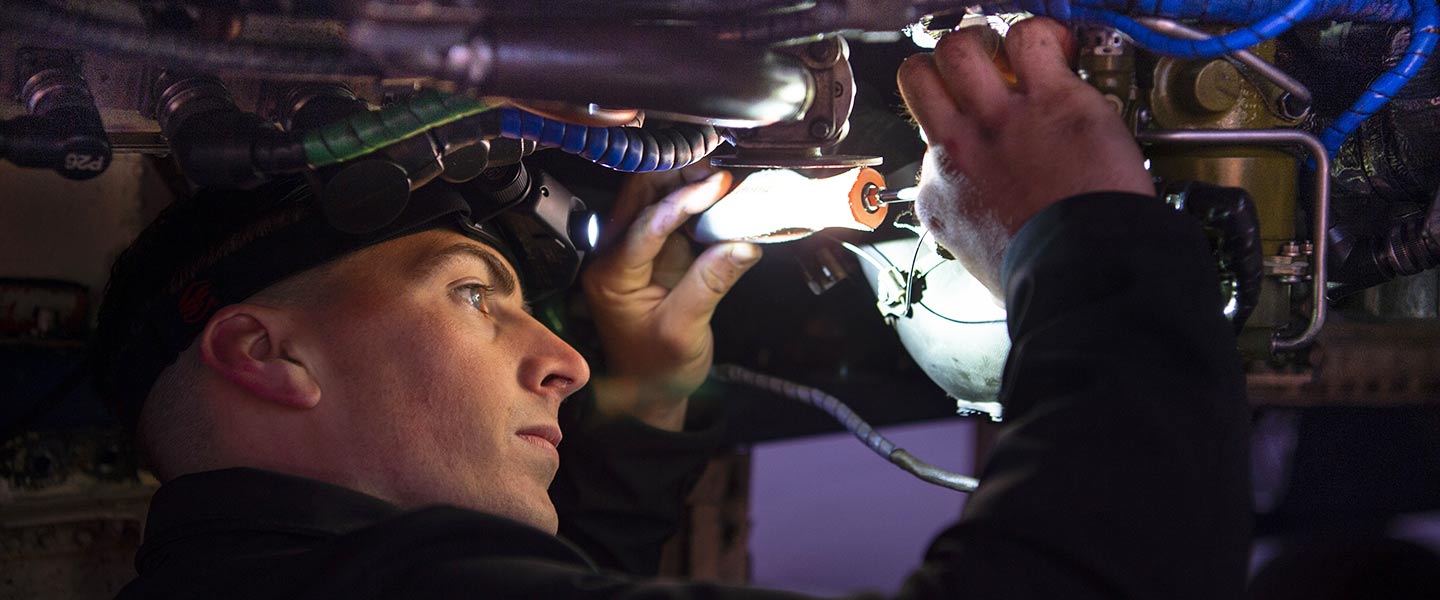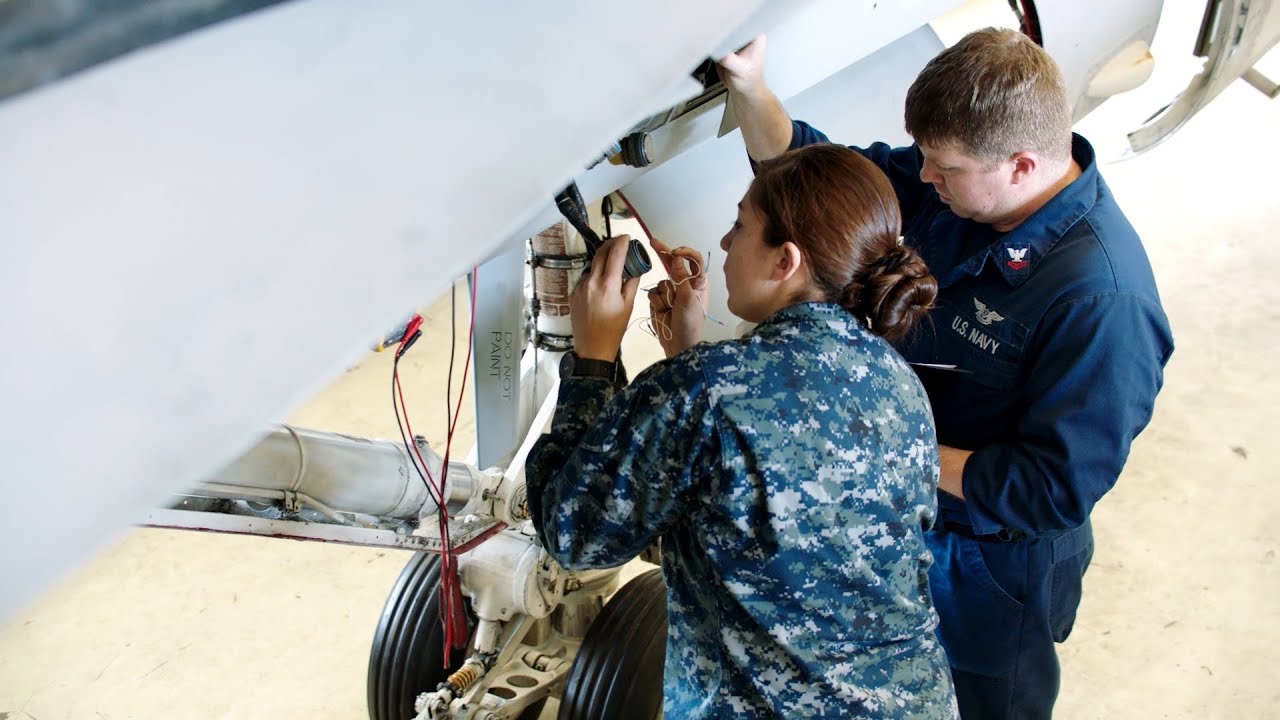What to Expect
More Information
Responsibilities
Aviation Electrician’s Mates (AE) are responsible for maintaining, testing, troubleshooting and repairing complex electrical and electronic systems and instruments using the latest test equipment and procedures. The types of systems you may work on include:
- Power generators, converters and distribution
- Interior and exterior lighting
- Aircraft batteries, hydraulics, landing gear and flight control
- Automatic flight control, stabilization, attitude and compass systems
- Aircraft and ship navigation systems
- Power plant engines
- Indicating and warning systems
- Digital computer systems and fiber optics
- Infrared detection and radar
- Laser electronics
- Communications equipment
- Electric transformers and circuits
- Motors
Work Environment
As an AE, you will perform duties at sea and ashore around the world. Your position may take you from land-based aircraft squadrons to seafaring aircraft carriers. Work is performed both indoors and outdoors in shop environments, offices, clean labs or garages. You can expect to work closely with teammates and do technical work of a physical nature.
Training & Advancement
Upon completion of initial training at Recruit Training Command Great Lakes (known as Boot Camp), you’ll report for specialized training, including:
Class "A" Technical School (13 weeks) in Pensacola, FL, for training in aviation theory and technical knowledge, aviation electrical systems and electronics theory.
Additional training may be required depending on your assignment. AEs can expect to receive specialized training on specific aircraft or equipment relevant to your assignment before reporting for operational activities.
After you’ve completed training, you may be assigned to naval air stations, squadrons, aircraft carriers or other aviation facilities in the United States or overseas. As an AE, you can expect approximately 60% of your assignments to take place at sea.
Promotion opportunities are regularly available but competitive and based on performance.
Advanced Training
Advanced training as an Aviation Electrician’s Mate may also be available during later stages of your career. For those with further leadership aspirations and a college degree, Officer roles may be available, providing opportunities to lead and train others.
Post-Service Opportunities
Specialized training received and work experience gained in the course of service can lead to valuable credentialing and occupational opportunities in related fields in the civilian world, such as employment with airlines, airports, aircraft manufacturers and more.
Education Opportunities
Beyond offering access to professional credentials and certifications, Navy technical and operational training as an Aviation Electrician’s Mate can translate to credit hours toward a bachelor’s or associate degree through the American Council on Education.
You may also continue your education through undergraduate degree opportunities like the Navy College Program and Tuition Assistance and the Post-9/11 GI Bill.
Qualifications & Requirements
A high-school diploma or equivalent is required to become an Enlisted Sailor and an Aviation Electrician’s Mate. You must also be a U.S. citizen eligible for security clearance.
As an AE applicant, you should be interested in aviation and working with aircraft, as well as electrical and computer systems. You should possess strong arithmetic, writing and speaking skills, as well as the ability to performed detailed precision work with tools, equipment and machines. The AE rate requires a tough academic curriculum in electronics training, making good study skills a necessity.
Important personal traits for AEs include resourcefulness and the ability to work well with and contribute to a team. You should also be physically fit and possess normal hearing and color perception.
General qualifications may vary depending upon whether you’re currently serving, whether you’ve served before or whether you’ve never served before.
Part-Time Opportunities
There are part-time opportunities available as an Aviation Electrician's Mate.
Serving part-time as a Navy Reserve Sailor, your duties will be carried out during your scheduled drilling and training periods. During monthly drilling, Aviation Electrician’s Mates in the Navy Reserve typically work at a location close to their homes.
For annual training, you may serve anywhere in the world, including locations in the U.S., at bases overseas, or in areas where humanitarian needs are great.
Take a moment to learn more about the general roles and responsibilities of Navy Reserve Sailors.
Most of what you do in the Navy Reserve is considered training. The basic Navy Reserve commitment involves training a minimum of one weekend a month (referred to as drilling) and two weeks a year (referred to as Annual Training) – or the equivalent of that.
Aviation Electrician’s Mates in the Navy Reserve serve in an Enlisted role. Before receiving the ongoing professional training that comes with the job, initial training requirements must be met.
For current or former military Enlisted servicemembers, prior experience satisfies the initial Recruit Training requirement, so you will not need to go through Boot Camp again.
For those without prior military experience, you will need to meet the initial Recruit Training requirement by attending Boot Camp in Great Lakes, IL. This training course will prepare you for service in the Navy Reserve and count as your first Annual Training.

































































































































